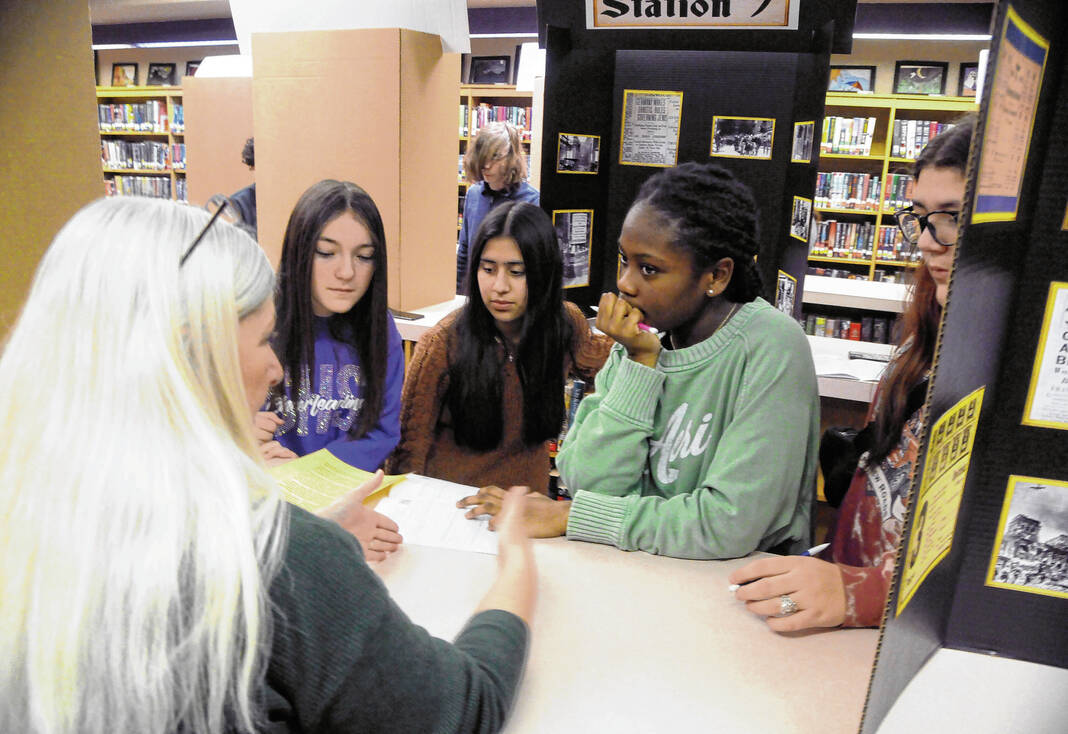
Seymour High School English teacher Jane Bartsch talks to sophomores Abby Mosley, Yuleimy Ruiz Rosa, Nevaeh Dennis and Addie Kinworthy as they participate in the gallery walk simulated Holocaust display in the school library.
Zach Spicer | The Tribune
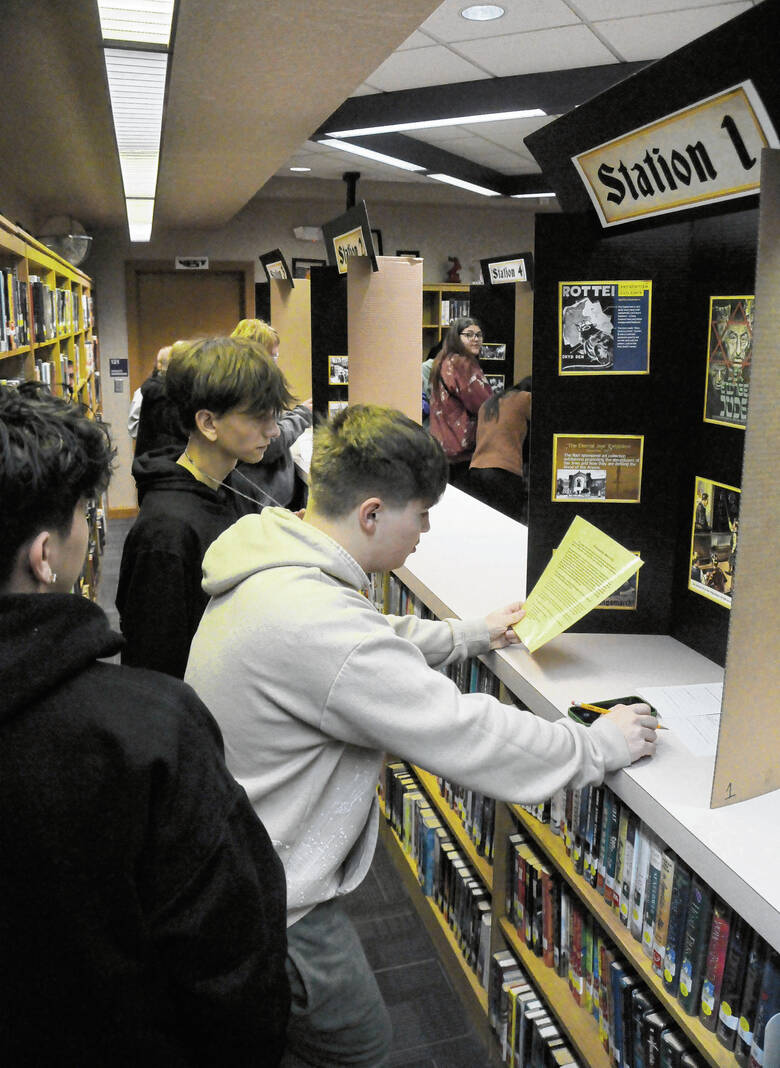
Seymour High School sophomores Blake Garcia, Wyatt Hartley and Kaleb Holbrook begin the gallery walk simulated Holocaust display in the school library.
Zach Spicer | The Tribune
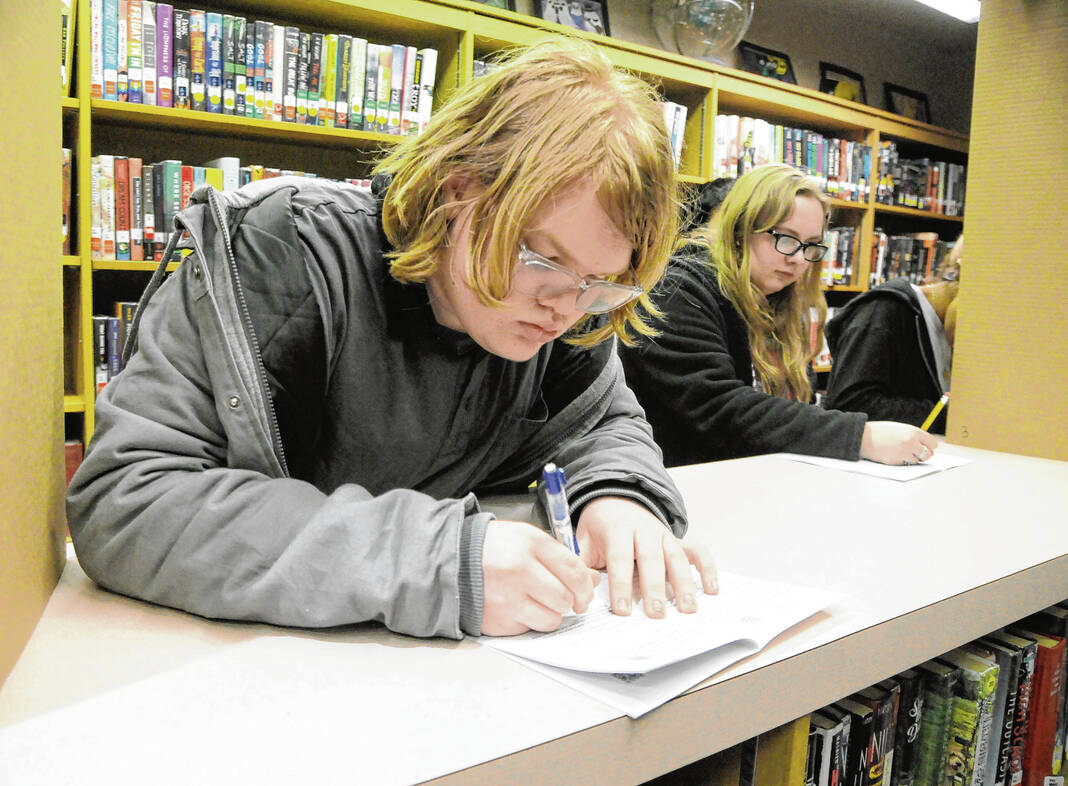
Seymour High School sophomores Brauc Applegate and Addy Helton write in their booklets as they participate in the gallery walk simulated Holocaust display in the school library.
Zach Spicer | The Tribune
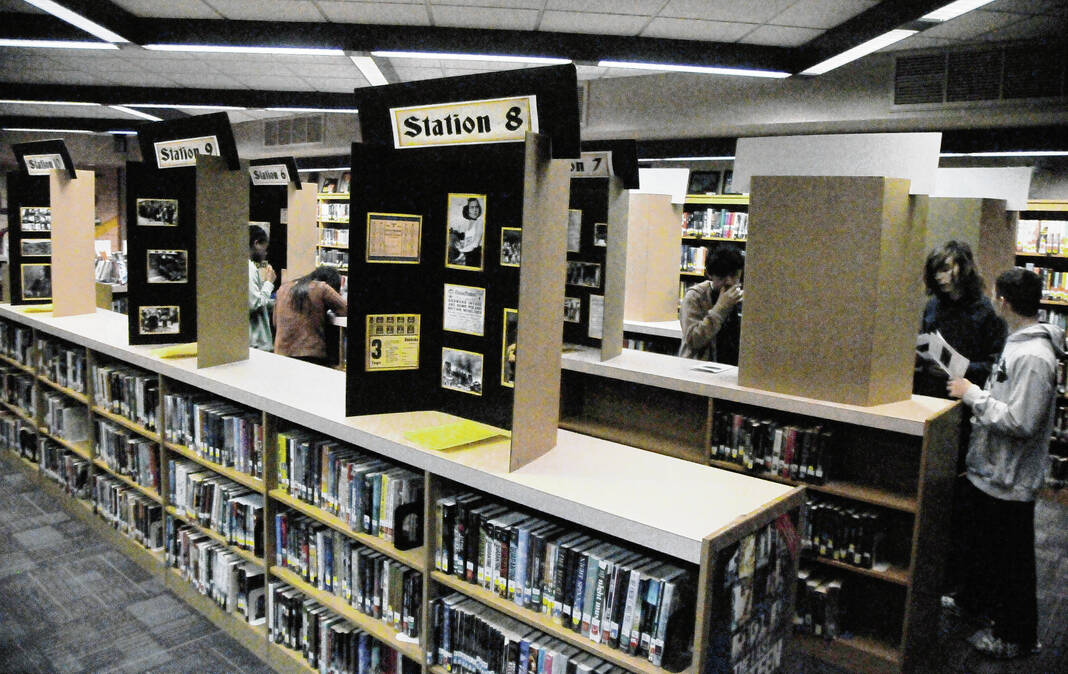
Seymour High School English teacher Jane Bartsch and her husband created the 10-station gallery walk simulated Holocaust display.
Zach Spicer | The Tribune
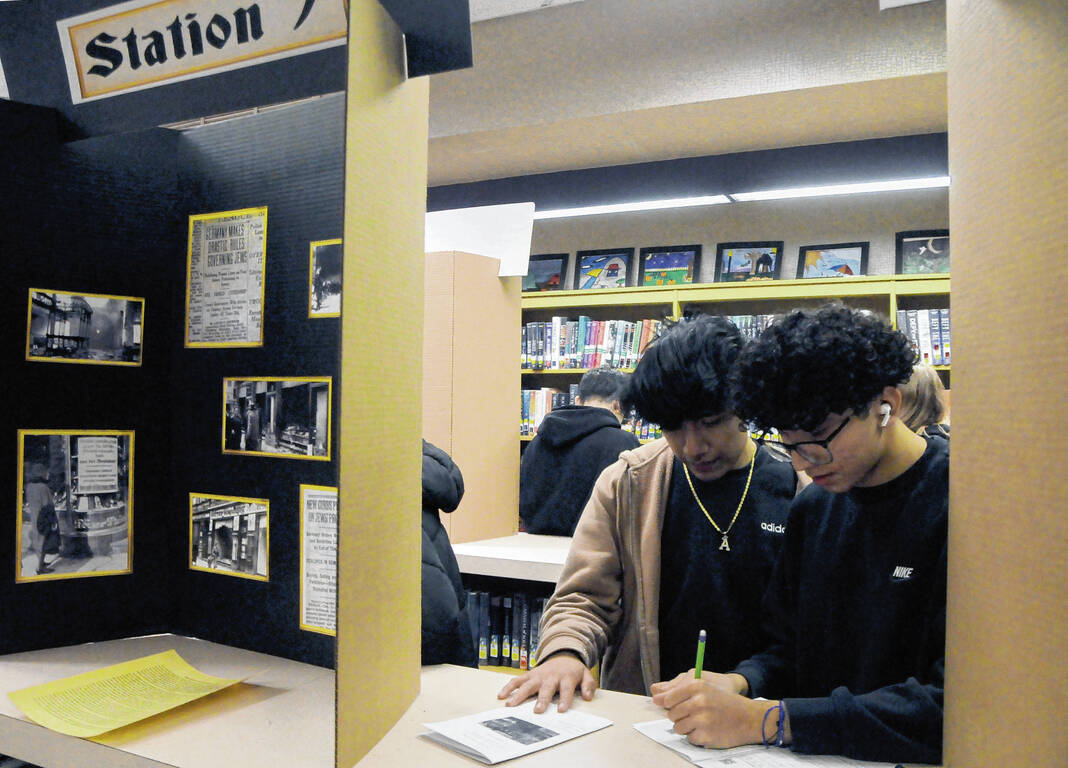
Seymour High School sophomores Andres Miguel and Anthony Bernardino answer questions in their booklets as they participate in the gallery walk simulated Holocaust display in the school library.
Zach Spicer | The Tribune
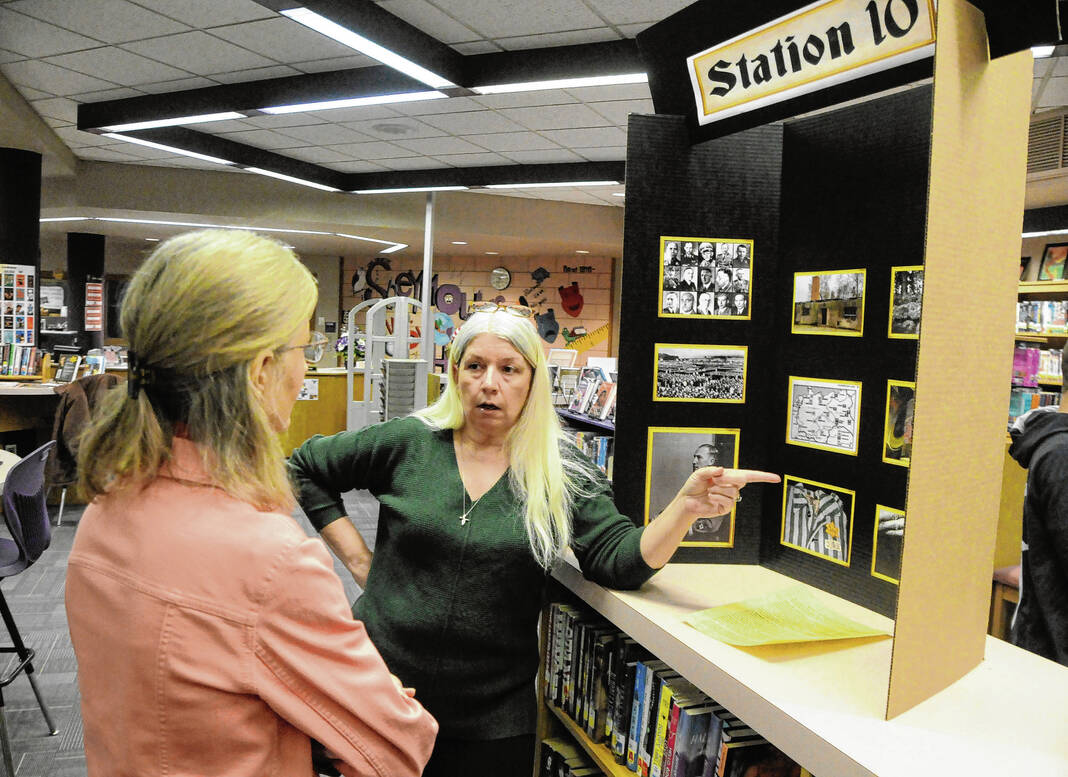
Seymour High School English teacher Jane Bartsch, right, talks to fellow English teacher Christine Huffman as sophomores participate in the gallery walk simulated Holocaust display in the school library.
Zach Spicer | The Tribune
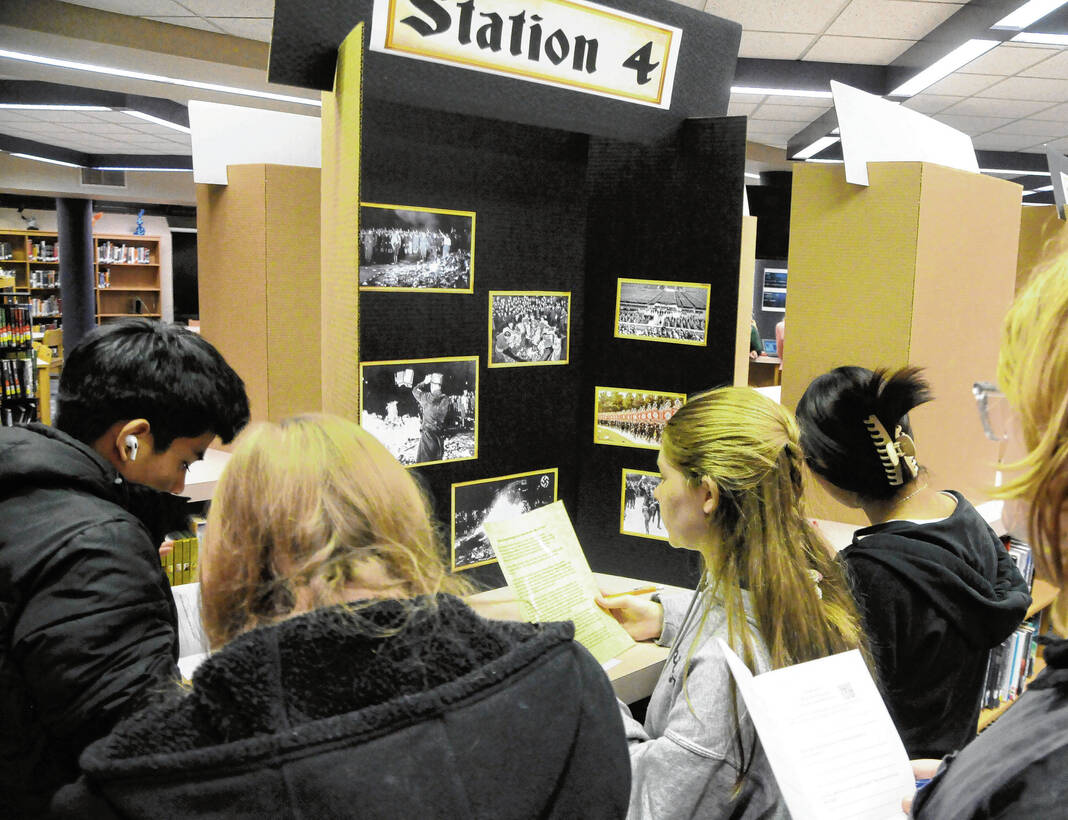
Seymour High School sophomore Maria Burton reads content at a station as she and her classmates participate in the gallery walk simulated Holocaust display in the school library.
Zach Spicer | The Tribune
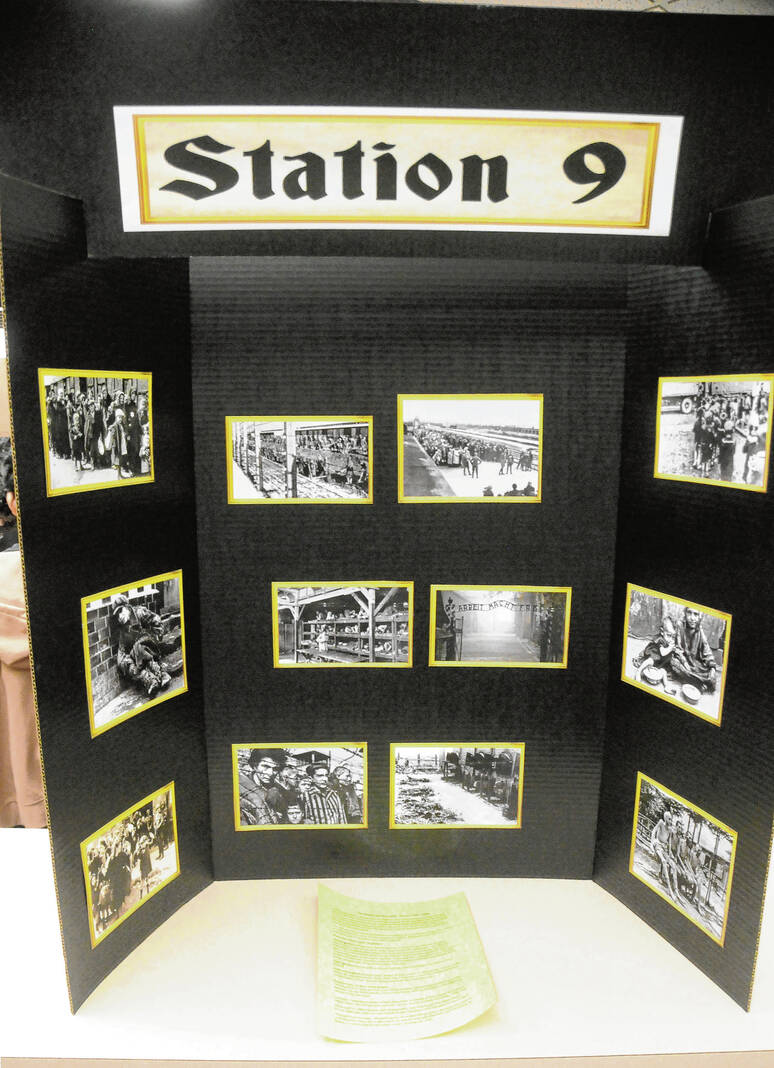
A look at one of the stations created by Seymour High School English teacher Jane Bartsch for the gallery walk simulated Holocaust display.
Zach Spicer | The Tribune
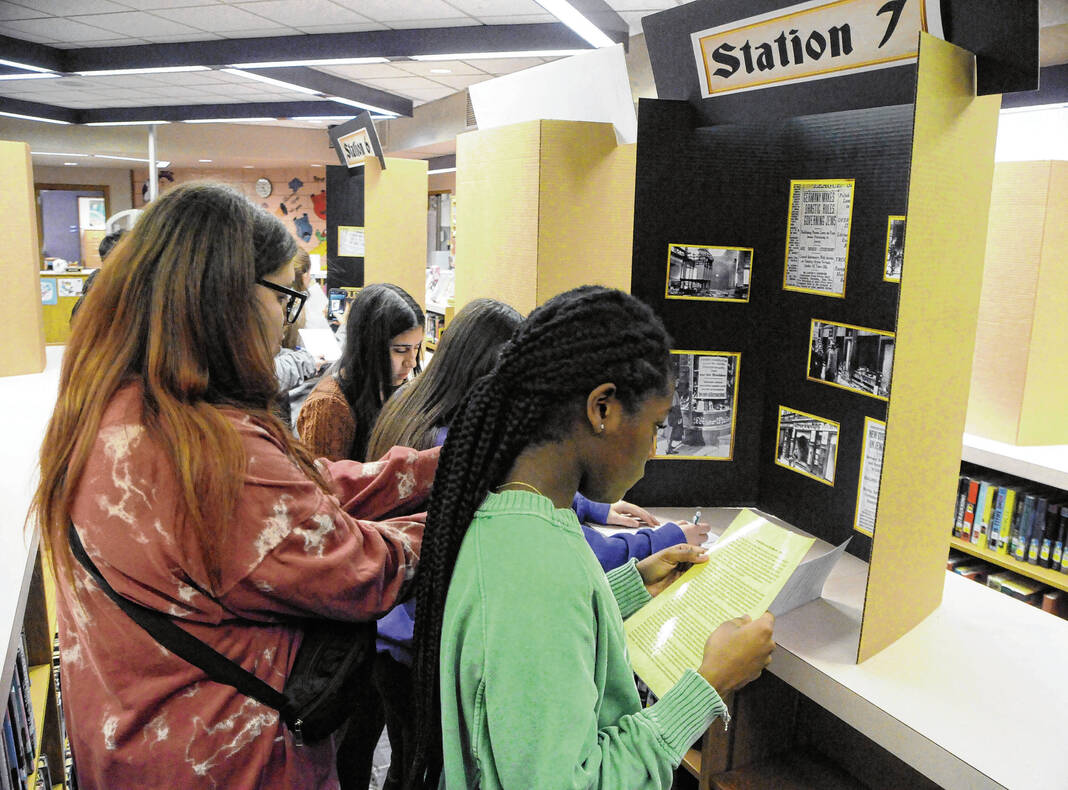
Seymour High School English sophomores Addie Kinworthy, Yuleimy Ruiz Rosa, Abby Mosley and Nevaeh Dennis participate in the gallery walk simulated Holocaust display in the school library.
Zach Spicer | The Tribune
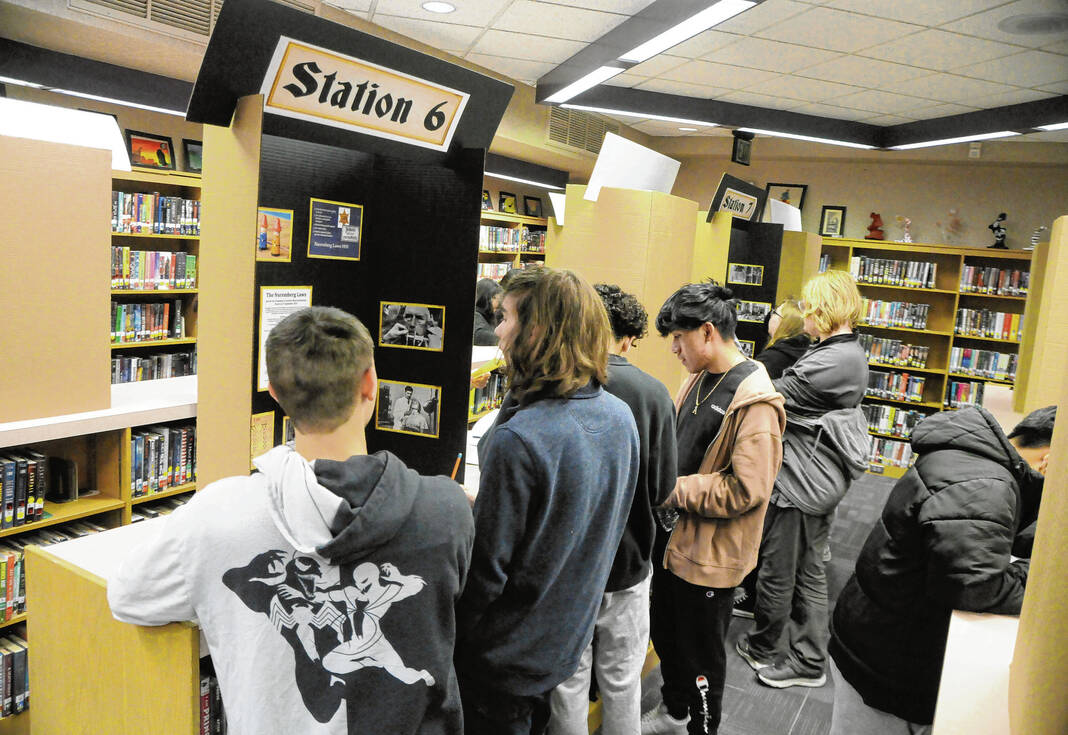
Seymour High School sophomores participate in the gallery walk simulated Holocaust display in the school library.
Zach Spicer | The Tribune
This semester, Seymour High School sophomores are getting two subjects in one class.
English 10 teachers Jane Bartsch, Tim Perry and Christine Huffman are hitting the standards of grammar, language, background knowledge about authors, the authors’ main idea and historical perspective before having students read a memoir and a novel from the Holocaust era. All the while, they also are learning about the genocide of European Jews during World War II.
“To me, this is the perfect marriage of the social studies that I no longer teach and the English that I do teach,” Bartsch said.
The teachers chose the novel “The Book Thief” by Markus Zusak and the memoir “Night” by Holocaust survivor Elie Wiesel.
Before starting those books, they felt it was best to do some frontloading, which first involved reading about the authors and the time period in which they wrote.
“I feel like you can’t teach historical fiction without knowing historical facts,” Bartsch said.
“We have been teaching them to read about the authors. We have to see what time period they lived in, social pressures they had so they can better understand the authors’ works,” she said. “Also working with them about not reading with their eyes, meaning looking at the holistic picture, just see what the author is trying to tell them and themes. We’ve been trying to teach them ‘What are the overarching lessons?’”
The next part involved a simulation activity, and Bartsch created it based on an experience you would receive if you visited the United States Holocaust Museum in Washington, D.C.
The 10-station gallery walk helped increase the students’ depth of knowledge about the Holocaust.
The stations were propaganda; Dachau; economic boycott; book burning and rise of Totalitarianism; Night of the Long Knives and Hitler the fuhrer; Nuremberg Laws; Aryanization and Kristallnacht; youth, rations and the Yellow Star; ghettos and Auschwitz; and the Wannsee Conference and the final solution.
Each student received a booklet titled “The Path to Genocide” to answer questions as they visited each station. Bartsch encouraged them to read all of the content, look at the photos and take pictures of each station, and QR codes were provided for them to later view videos for more information.
“What really made me focus on the path to genocide other than looking at the Holocaust in general, we look at what’s happening in our world today — perversion of media, believing social media, not questioning when an influencer tells you something and Oct. 7 (Hamas terrorist attack on Israel) — that really hit home,” Bartsch said. “I think it’s important that they know that. I have given them a little bit of background knowledge about other genocides.”
The back of the booklets contains works cited in case students want to read even more about the Nazis’ plan to completely eradicate Jewish memory.
“I talked to them before we did our simulation about most of the groups had more that survived than didn’t, and I said the reason why you have more surivors is because we have more information about people that survived because when the Nazis went in and they destroyed communities, they destroyed communities,” Bartsch said.
“There were no records. It wasn’t like today where you’ve got Social Security numbers, cellphone records, data that’s on computers. They destroyed everything because the goal was to wipe their memory,” she said.
After participating in the gallery walk, sophomores Nevaeh Dennis, Abby Mosley and Yuleimy Ruiz Rosa shared their thoughts.
“It opens up my eyes to see what people really went through back then and how the world used to be and how we’ve grown and stayed the same, how things are just so sad,” Dennis said.
“I think it’s unbelievable and very tragic what people experienced back then, how we haven’t really changed since, either,” Mosley said.
“Collectively, everyone always believed the Holocaust is such a tragedy, but I feel like we’re not even out of that tragedy yet,” Ruiz Rosa said. “I feel like today, there are still things going on, and the growth we’ve had since then has been so minimal and small.”
Next, the students will work on projects to show their depth of knowledge.
After that, they will read the memoir and the book and also watch the movie based on the novel.
The takeaway in the end?
“My takeaway of everything I do is that my students are thinkers,” Bartsch said. “I want them to see what has happened in history because they are going to be the next carriers of the torch, so I want them to see ‘Hey, this is what happened. We can’t let this happen again, obviously.’ … I want them to be able to take information and discern what is true, what is factual, how to figure out what is true and what is factual.”
She also wants them to know it’s OK to have an opinion as long as it’s not harmful.
“You should listen to differing opinions and learn to draw your own conclusions,” Bartsch said. “We do a lot of that in here, a lot of critical and upper-level thinking skills because I think that from anything you study, that needs to be your biggest takeaway because if you have that, you can learn anything you want.”
